Mount Kilimanjaro and the Tour du Mont Blanc (TMB, or Tour of Mont Blanc) are both described as some of the most memorable hikes and must do adventures for outdoors aficionados. Kilimanjaro is a climb up the tallest free-standing mountain (with fewer fair and responsible tour operators), while TMB is a trek around Western Europe’s tallest mountain. We have done both, and, indeed, they are both very scenic and memorable. However, there also are striking differences between them. If you are tossing between either or, here are 10 differences to help you decide which one might be more suitable for you:
1. Altitude—the big Kilimanjaro challenge
The biggest challenge to summit Kilimanjaro is its altitude. People who struggle acclimatizing to the thin air will find Kilimanjaro very difficult; albeit following all the rules will most likely allow even the most altitude sensitive hikers to summit safely and avoid danger and death on Kilimanjaro.
These rules include: taking your time to gain altitude slowly, both by ascending slowly during the day and allowing yourself a full week until your final summit push; drinking lots of water; sleeping lower overnight than hiking during the day; getting enough sleep; eating well and potentially supplementing your diet with essential nutrients to stay fit and healthy; and going with an experienced and well-trained local guide.
However, even when following all the do’s and don’ts diligently, some people will still experience common discomforts such as nausea or headache while climbing Kilimanjaro.
The Tour du Mont Blanc, on the other hand, leads around Mont Blanc, not to the top of the mountain. The highest point we reached on TMB was just over 2,500 meters (8,200ft) altitude, while earning a Kilimanjaro climbing certificate means reaching at least 5,685 meters of altitude for the Gilman’s Point sub-summit, or 5,895 meters for the real summit, Uhuru Peak. Thus, altitude is generally not a problem for TMB hikers, but the main challenge for Kilimanjaro climbers.
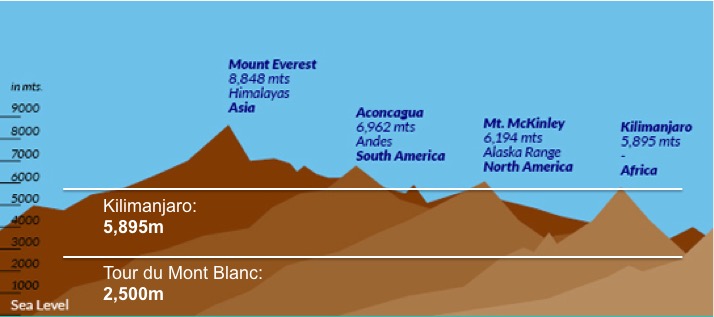
Altitude of Kilimanjaro versus Tour du Mont Blanc
2. Fitness—the big MTB challenge
Physically speaking, Kilimanjaro is relatively easy. People of all age groups, shapes, handicaps and fitness levels have managed to summit safely. Over the course of around a week, you will only cover a distance of ca. 60–90 kilometers (30–50mi) depending on the route taken, and your altitude gain is only about 3,500–4,000 meters (14,000–12,000ft). Sounds a lot? Then consider this:
On TMB, we covered 160 kilometers and a total ascent of almost 9,000 meters. This is more than double the ascent on Mt Kilimanjaro! While Kilimanjaro has relatively moderate slopes (other than the final summit push and few exceptions in between), TMB is a constant alternation of steep uphill and downhill slopes. This is because you will be hiking over mountain ridges during the day but mostly sleeping in the valleys overnight.
On top of that, while arrangement of transportation is possible, most people carry their own stuff while trekking on the Tour du Mont Blanc. This at least doubles the weight you will carry during the day, and hence further doubles the effort of TMB compared to Kilimanjaro. Hence, we found that TMB is—physically speaking—at least 4x harder than Kilimanjaro (double the ascent and double the weight).
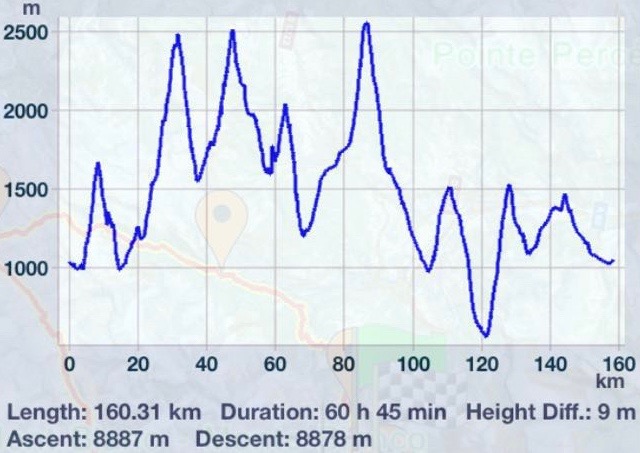
Tour du Mont Blanc altitude profile
3. Organization—operators versus self-organized
Almost all tourist scaling Mount Kilimanjaro use the package service of a tour operator. This is driven by regulations that require every tourist to be accompanied by a locally registered guide, as well as the lack of infrastructure such as roads or accommodation (except for basic huts along one route). As a consequence, everything you need for a week—tents and sleeping bags, food and water, all gear including full-on winter gear for the cold summit, and so forth—need to be carried along. While it would be possible to rely on a guide only for regulatory and guidance purposes (e.g. where to find the next water source), most tourists would find it overly daunting to organize and carry everything themselves. With plenty of package tour offers, it’s much more convenient to rely on the expert services of a specialized tour company. Find best Kilimanjaro operators and offers at Fair Voyage.
Mont Blanc, in contrast, is surrounded by top-notch infrastructure and a good offer of accommodation. From refuges with dormitories only to luxury hotels in several towns and villages along the way as well as a wide range of hostels and hotels in between, you will be spoilt for choice. With a bit of planning, hikers preferring separate rooms with en-suite shower facilities will be able to avoid dorm rooms during the entire trek. Budget travellers, on the other hand, will also find plenty of decent low-priced options (ca. EUR 30 per night, usually including hot shower and breakfast). Fully self-supported camping for serious outdoors adventurers is also possible, and there is lots of clean fresh mountain water along the way. Thus, while organized tours are available, most TMB hikers opt for a self-organized trek.
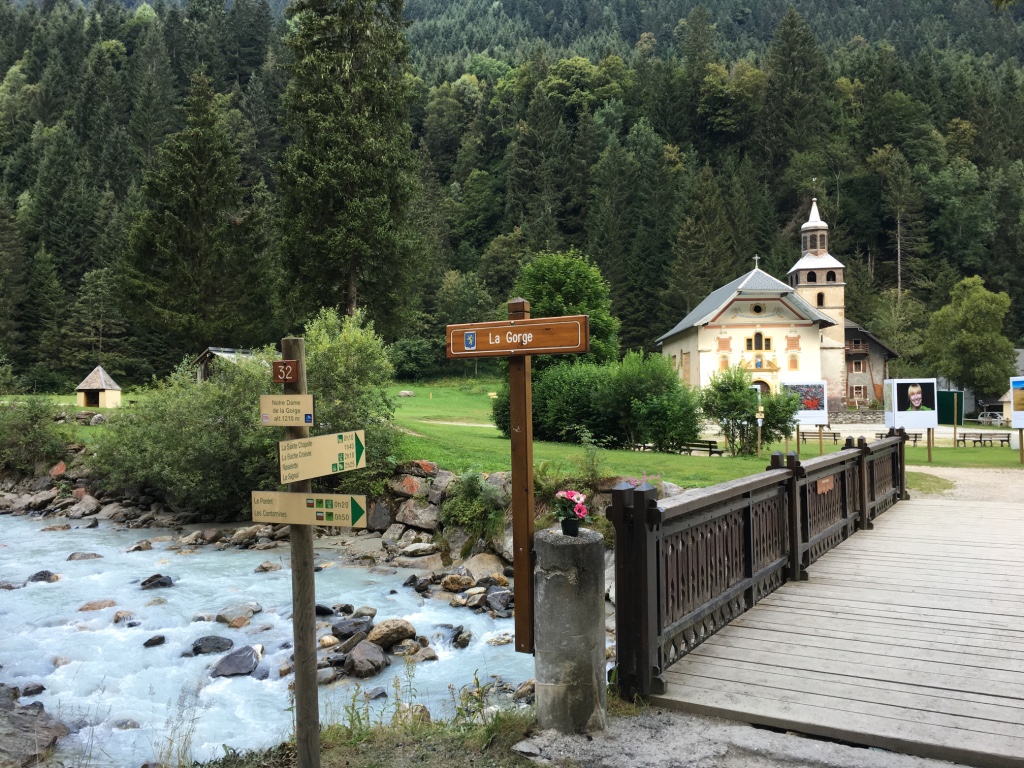
Easy to find your way and self-organize your trek around Mont Blanc
4. Heavy lifting—porters versus self-supported
On Mt Kilimanjaro, tourists normally don’t carry anything other than their daypack. Porters do the heavy lifting. They will carry your tents and communal equipment, food and water, as well as your personal gear. You could even hire a private porter to carry your daypack for a small additional fee.
On TMB, most hikers carry everything themselves. This is not only to safe costs, but also because it creates a more authentic experience and provides flexibility on the hiking routes.
Technically speaking, Tour du Mont Blanc is a real trekking experience, while Kilimanjaro is at times described as “a walk in the park”. People may disagree whether it should be called a hike or a climb, but for sure Kilimanjaro cannot be called a trek for the majority of tourists (in stark contrast to the porters of course).
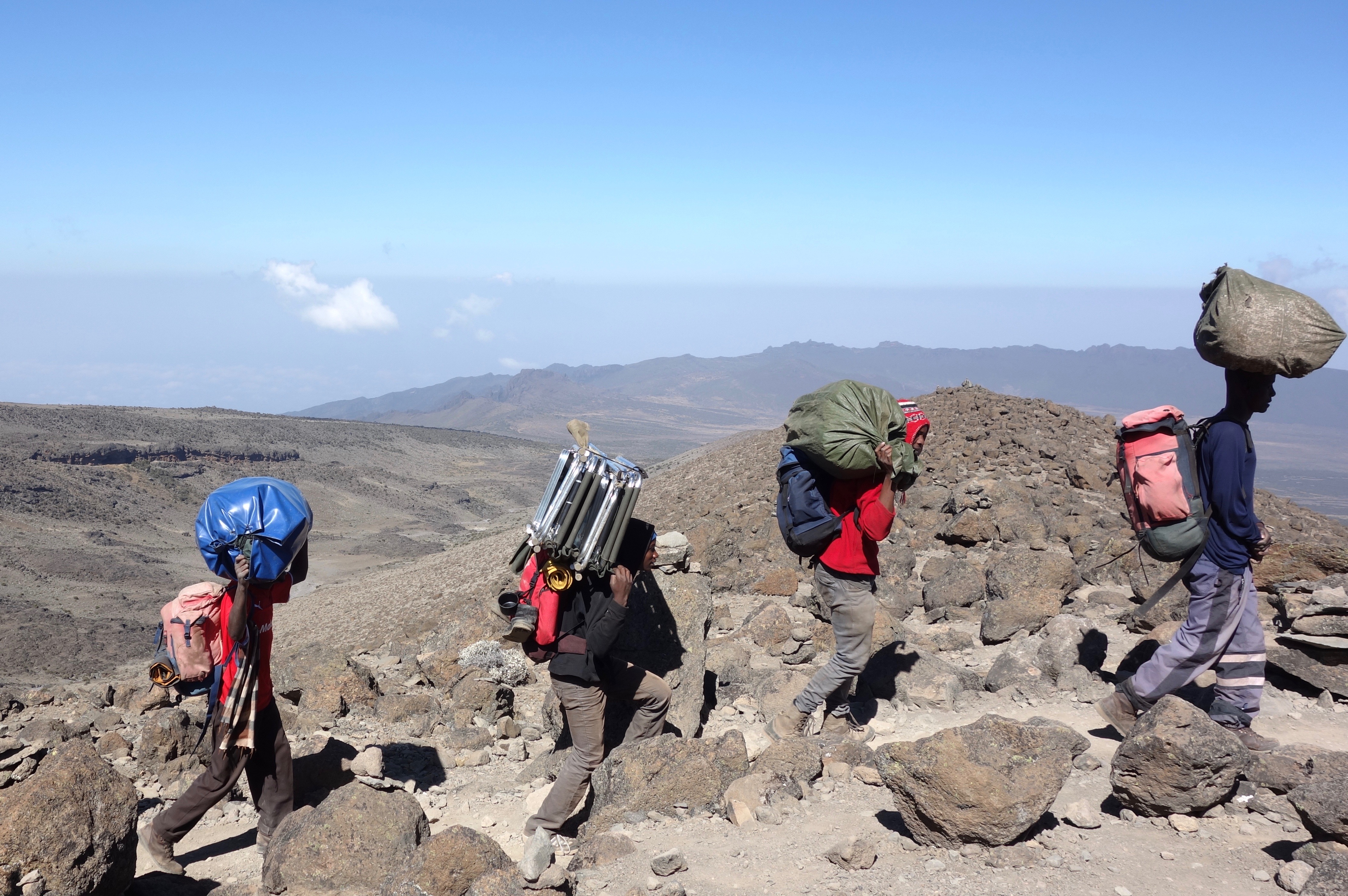
Kilimanjaro porters – photo by Lynn Jackson
5. Budget—two different leagues
Even though Mount Kilimanjaro is located in a supposedly rather cheap country in East Africa (Tanzania), and Mont Blanc borders one of the most expensive countries on earth (Switzerland), this doesn’t tell you much about the costs involved. In fact, Tanzania is a very expensive country to visit for tourists, while Mont Blanc has plenty of decent low-cost accommodation options all around the mountain. While park fees alone drive the costs of Kilimanjaro climbing tours into the range of at least USD 2,000 (for short low-budget climbs), Mont Blanc is free for all to explore on their own. As a result, Mt Kilimanjaro tours are usually at least twice as expensive as treks around the Mont Blanc, even when budgeting for decent ensuite accommodation and excellent food along the route in France, Italy, and Switzerland.
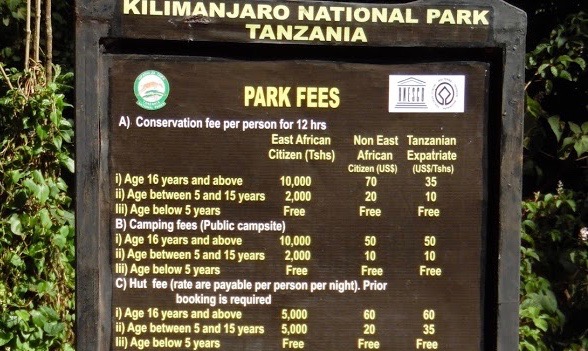
Kilimanjaro National Park fees
6. Crowds—for everyone versus only the fit
Mt Kilimanjaro is doable for almost anyone, finances permitting. With the lure of being the tallest free-standing mountain on earth and the highest mountain in Africa, it ends up on many bucket lists and attracts amateurs and experienced climbers alike from every corner of the planet. Thus, you won’t be surprised to meet people of all age groups, shapes, handicaps and fitness levels on the top of Kilimanjaro.
TBM, on the other hand, tends to attract very fit and strong hikers. Ascending and descending one to two kilometers of altitude every single day while carrying your own gear is a completely different challenge altogether.
We were two relatively well-trained hikers in our mid 30s and early 40s. On Kilimanjaro, we constantly found ourselves ahead of our group, and—in a way—under-challenged for most of the time. On TMB, however, we found ourselves overtaken by people almost twice our age! It is particularly popular with experienced French and Swiss hikers who spend almost every weekend training in the Alps. Without serious training, many a hiker has called it quits and not completed the entire tour.
Pole pole (slowly slowly) will get you to the top of Kilimanjaro, but not very far around the Mont Blanc.
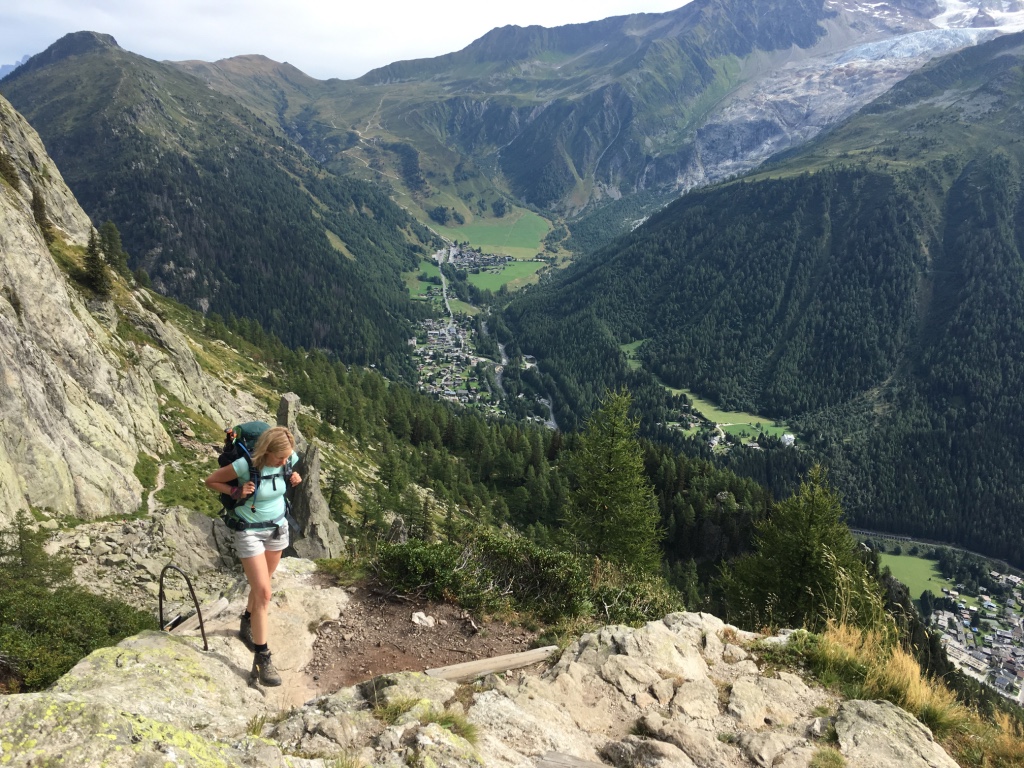
Lots of steep ascents on the Tour du Mont Blanc
7. Food—France and Italy win the race
When you are climbing Mount Kilimanjaro, your food will be provided by your tour operator. Consequently, the quality and variety of your food will depend on the quality of your operator. Even with the best companies, however, the food will tend to taste boring and repetitive after a week’s hike.
This is in stark contrast to Mont Blanc which has a lot of culinary highlights on offer. In fact, food even is one of TMB’s key attractions, only second to its scenery. You will get to taste crispy French baguette and organic farmhouse cheeses, fresh Italian pasta and polenta, and savory Swiss cured meats and hearty dishes—just to name a few—as you make your way through three different countries.
For lunch, you can either buy food at grocery stores in the villages where you sleep overnight and have your own picnic along the way, or stop off en route at one of the mountain huts that offer delicious local produce and an amazing scenery, all at fair prices. For dinner, most villages where you will stay overnight have a good choice of restaurants, or your hostel will provide a set menu.
And of course there’s lots of cold beer and fantastic wine to accompany your dinner, or even your lunch at a mountain hut, and you won’t miss your favorite espresso, latte or cappuccino to meet your caffeine cravings.
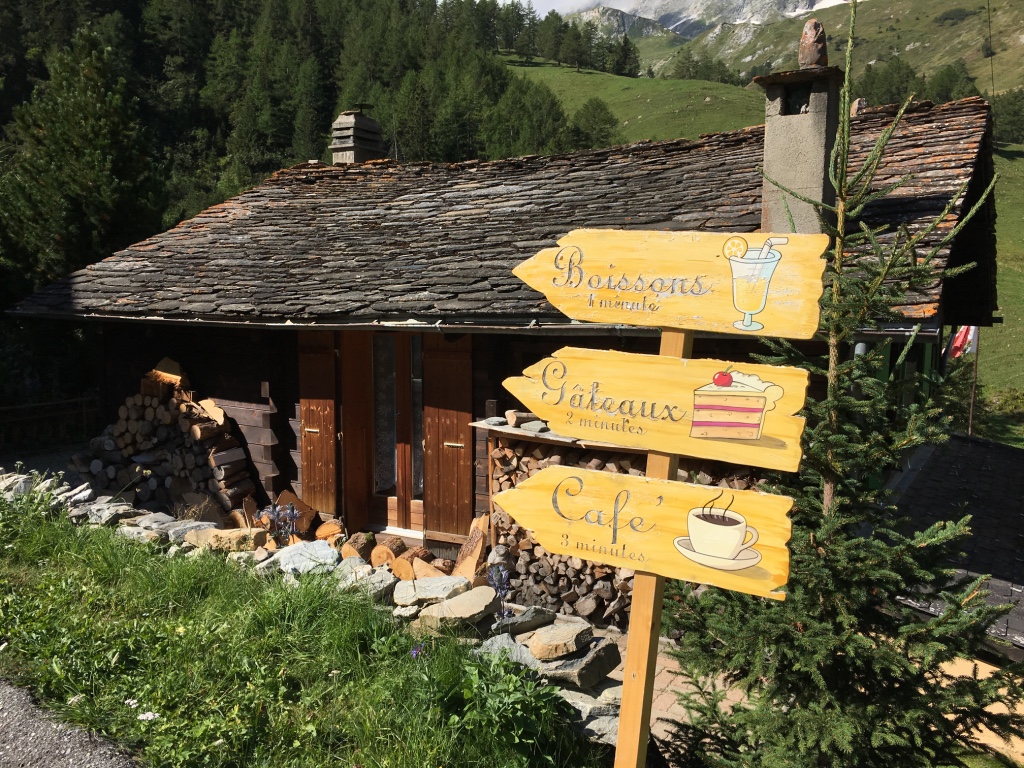
Great food and drinks all along the Tour du Mont Blanc
8. Accommodation—tents only, or whatever you want
On Kilimanjaro, only one route offers basic huts along the way. Most hikers, however, opt for more authentic Kilimanjaro hiking experiences and will end up sleeping in tents on designated campsites along the way. Tents are usually provided by tour operators, carried by the porters, and readily set up by the time hikers reach the camp.
Mont Blanc is an accommodation paradise by comparison. While those who which to do a fully self-supported trek, including carrying and pitching their own tent, are free to do so, others are spoilt for accommodation choices. The bigger villages offer anything from simple bed & breakfast to splurge five-star hotels and—of course—the full range of decent two, three and four-star hotels in between. In less busy areas, accommodation choices may be more basic and dominated by dorm-style refuges. With a bit of planning ahead, however, it is possible to always spend the night in clean single or double bedrooms with or without ensuite bathroom facilities.
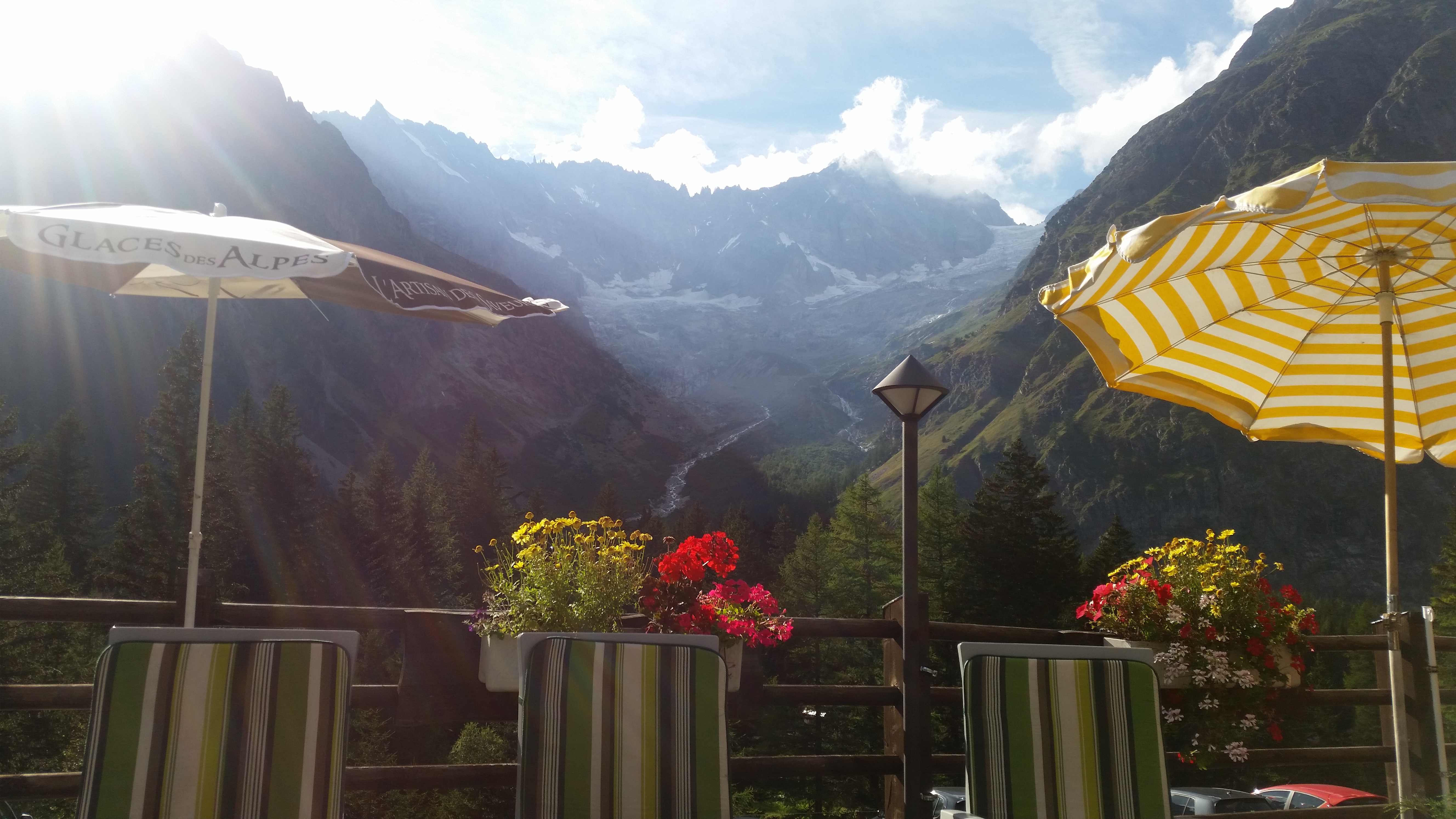
Great choice of accommodation all along the Tour du Mont Blanc
9. Shower—the real Kilimanjaro hurdle
There is no running water on Kilimanjaro, and, consequently, there are no showers and no flush toilets. Hikers have to make do with wet wipes that they bring on their own and a bucket of hot water that most tour operators provide. It’s this lack of bathroom facilities that provides one of the biggest hurdles for people to book a Kilimanjaro tour. Climbers who are not deterred by this challenge will often find it to be less of an issue than expected, but nevertheless it is a mental hurdle that not everyone is willing to cross. (Hint: It is also possible to rent a private portable toilet and shower for Kilimanjaro climbs. Request your custom offer at Fair Voyage.)
TMB trekkers don’t need to worry about their daily shower and washing facilities. In the worst case, some of the refuges in remote areas may run out of hot water late afternoon when everyone arrives. However, with a bit of luck, a hot shower will be available every single day, either ensuite or in shared bathroom facilities depending on your budget and accommodation choices.
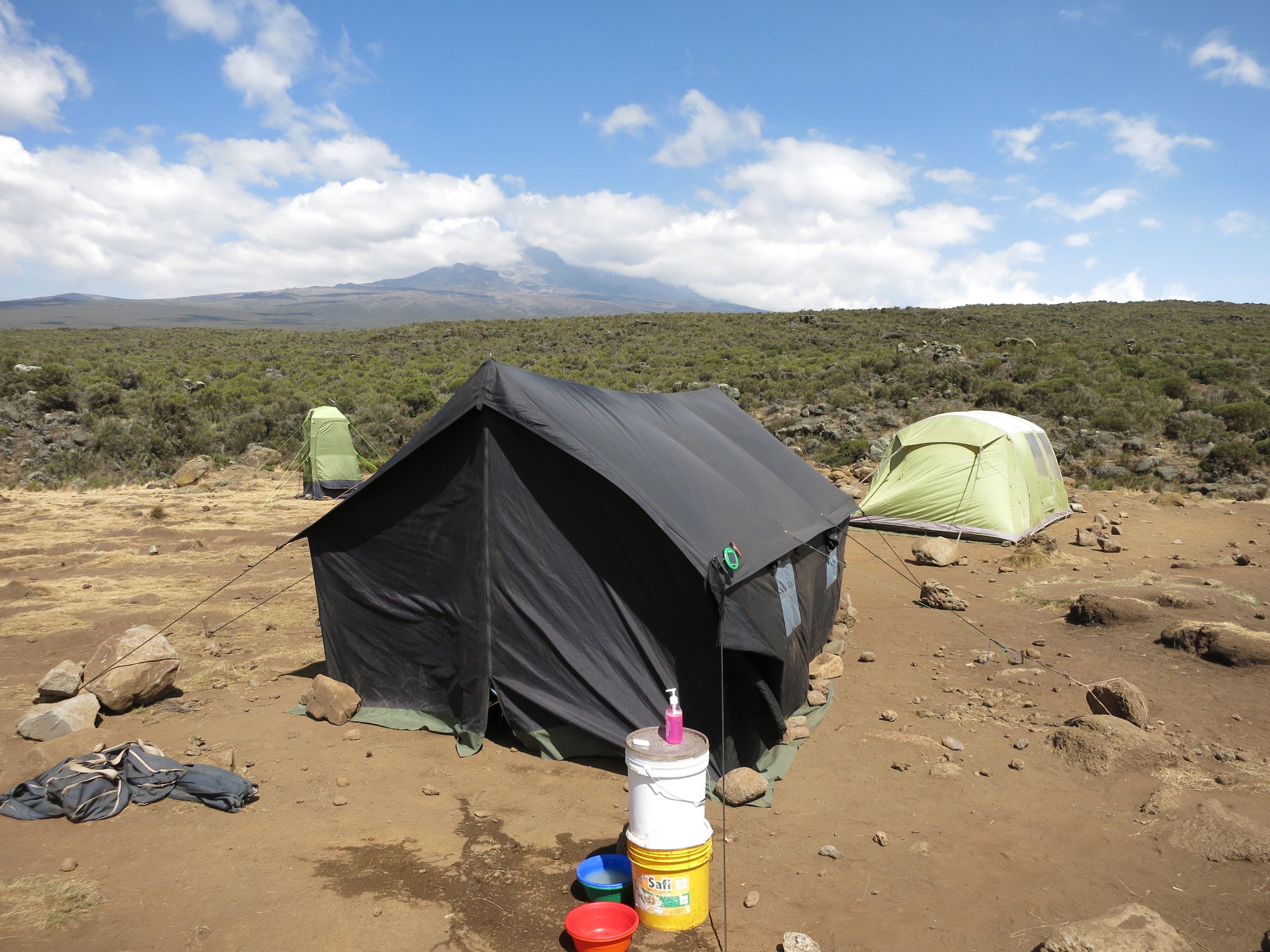
Water bucket for a quick wash instead of a shower on Kilimanjaro
10. Safety—perceived versus real dangers
Finally a word on safety. Kilimanjaro is often associated with danger and risks, especially due to its high altitude as well as poor transparency of lethal incidents. Recent media releases estimate around 3-4 deaths per year, or, in more conservative reporting, an assumed 10 incidents per year. Whatever the truth, most risks of Kilimanjaro seem to be entirely avoidable with the right preparation and approach, including taking your time, avoiding the dangerous Western Breach route, and booking with a reputable tour operator that provides well-trained and experienced local guides.
Mont Blanc is a completely different story. Its steep cliffs lead to several lethal incidents every season. In fact, anywhere from 30 to 70 deaths are reported in any given year! Most of those occur while practicing more extreme sports such as technical mountaineering, wingsuit flying or hiking in avalanche-prone areas. Nevertheless, deaths caused by falling off a cliff while hiking are not unheard of. The risk is especially high in bad weather (slippery paths in rain or snow, and poor visibility in fog) which limits the main hiking season to the three summer months. Even in good weather, however, an otherwise harmless stumble at the wrong location might have tragic consequences. This is not to say that Mont Blanc is outright dangerous. Fatal accidents may happen in all kinds of situations—just think of your daily drive to work! It is rather to put the often exaggerated dangers of Kilimanjaro into perspective.
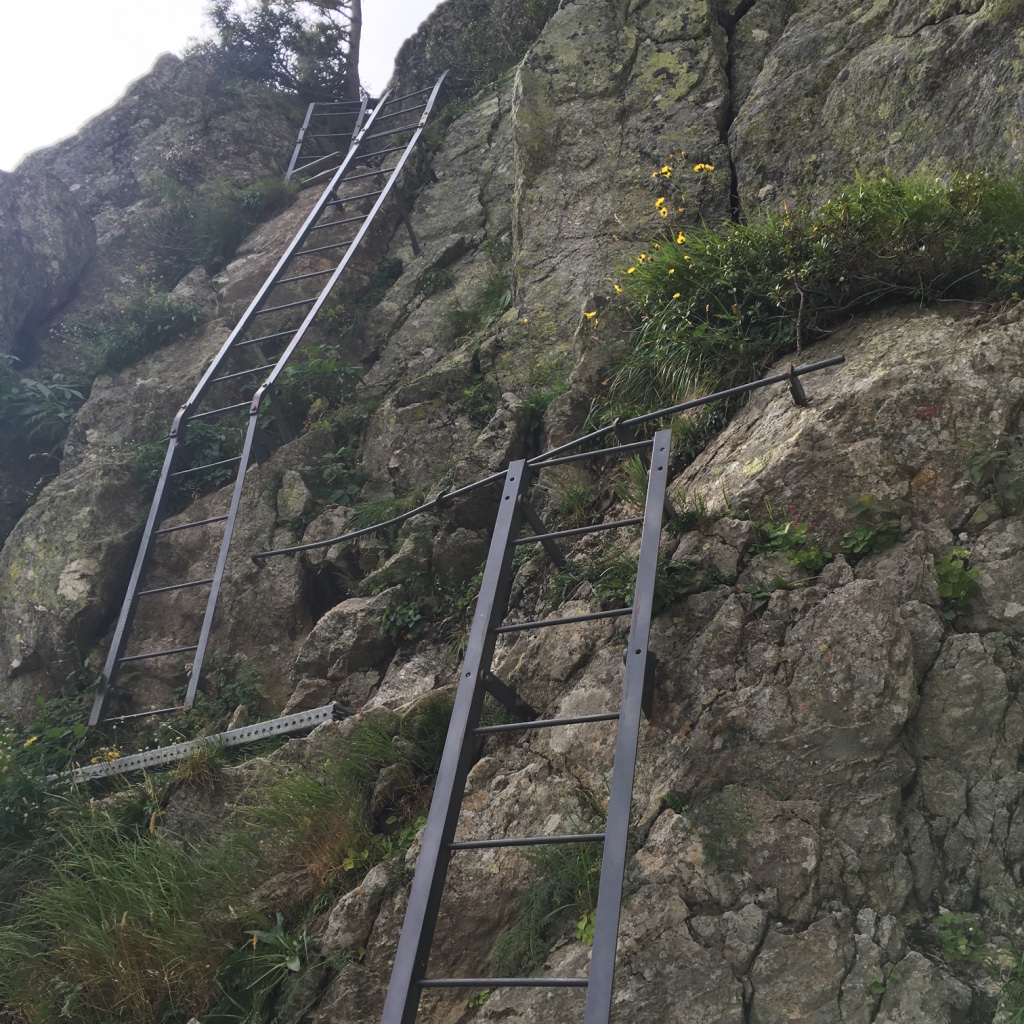
Scary ladders and steep cliffs on the Tour du Mont Blanc
Conclusion—beauty lies in the eye of the beholder
Last but not least, you might be left wondering whether Mount Kilimanjaro or Mont Blanc is more scenic and, hence, more worthwhile. Well—at the risk of sounding cliché—beauty lies in the eye of the beholder.
To us, the Tour du Mont Blanc clearly stood out in terms of beauty—lush meadows, green forests, white snow and glaciers, fresh clear mountain water, well-nourished sheep and cows with romantic bells, fairy-tale like wooden houses with exquisitely decorated gardens—a constant feast for the eyes.
Kilimanjaro can’t compare to all of that, but it is beautiful in it’s own right. It’s beautiful because it’s so different from any other place on earth, because it’s the tallest mountain most of us will ever be able to climb, because of its eerie trees and plants, because of its glaciers underneath the burning equatorial sun, and because of the simplicity of your lifestyle while making your way to the top.
Both Mount Kilimanjaro and Mont Blanc deserve to feature prominently on your bucket list. If you have to prioritize, hopefully you now have more clarity whether you will be climbing to the roof of Africa, or following the most scenic trek in the European Alps, or simply start with one and conclude with the other. Enjoy!
By the way, if you choose in favor of Mount Kilimanjaro, please book with a responsible tour operator who offers ethical climbs and does not exploit your porters (read about fair porter treatment). To book an ethical climb, it’s best to use the conscious travel platform Fair Voyage. Fair Voyage works in partnership with the Kilimanjaro Porters Assistance Project (KPAP) and verified responsible local operators to find & customize your best ethical climb offers, at local prices (100% free service). Get your best offer now!

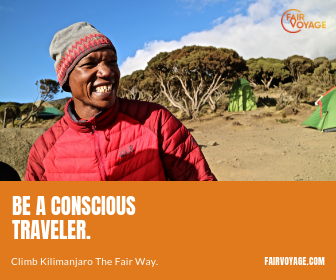



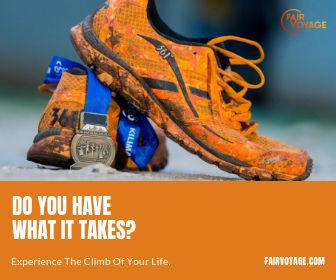
Leave a Reply
You must be logged in to post a comment.